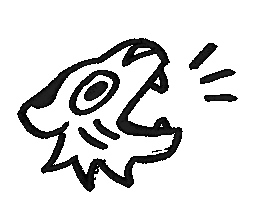Research & Development 2 - Module Overview [University]
- Hannah
- Nov 7, 2020
- 3 min read
Updated: Jan 15, 2022
My first Research & Development project at university examined the differences between SFX and VFX, but since this R&D brief needed me to include my own experimentation, I thought it'd be good to look at an area of animation I could feesibly have a go at. For this reason, I picked stop-motion. Usually, I like choosing frame-by-frame animation for a university project when possible, but I felt with this project I should try pushing myself out of my comfort zone. I hadn't tried much stop-motion previously, but it was a medium I find visually interesting and I could use this project as an opportunity to learn as much as I can about how professionals within the industry animate in this medium, providing me with a basis I can use in my future practice.
After attending Pictoplasma’s virtual conference this year, I was inspired by the huge variety of animations shown, especially the ones that used stop-motion, like Facing It by Sam Gainsborough, Good Intentions by Anna Mantzaris and Something To Remember by Niki Lindroth von Bahr. I liked the appeal of the stop-motion animations featured and wanted to learn more about the workflows of the medium.
When I started this project, I had only created one stop-motion animation previously and didn’t know much about the workflows used in this area of animation. Although the amount of stop-motions I've made hasn't increased by much, looking into a number of animators and animations in this field has given me an excellent amount of resources to consider for the future. I intend to use the workflows that I’ve researched to test out new ways for me to create stop-motion animations and see which methods work best for me.
I found that I was limited to the extent at which I could test out the workflows of the people I researched in this project. I don’t really have access to a lot of the materials I would have liked to try out, such as creating an armature and clay models/puppets so, instead, I used a ball of blue tac that I had lying around. I also don’t have a camera so I had to make do by using the free app Stop Motion Studio and my iPad which I had on hand. It worked fine for the needs of the project, but it would have been good to make something a bit more professional using a camera or with better assets. I would have liked to create more experiments using the workflows of the animators I researched, such as testing out Alexander Unger’s workflow to use Photoshop to edit out rigs and attempt to try pixilation animation. However, due to how long it takes to record a stop-motion animation, I found that I didn’t have enough time, as even the short rotoscoping experiment I did with the blue tac took a lot longer than I had expected.

When conducting research for my written essay, I was worried I’d find that stop-motion would begin to phase out of the animation industry due to its slow, time-consuming and often expensive process. However, I found quite the opposite. Stop-motion is still thriving to this day, as evidenced by movies like Kubo and the Two Strings, Missing Link and Isle of Dogs. I think the more we advance into an increasingly digital age, the more stop-motion will be cherished for its classic, hand-crafted look, but I think it will also advance with technology and find new ways to improve and speed up the workflow. Despite the rise and continuing development of 3D animation, stop-motion still manages to find its place in the industry and in the hearts of those with a love for the medium.




![JAMES TAYLOR of Arcus Studios - [Artist Talk]](https://static.wixstatic.com/media/e147ae_04714b09182e43739c4ee42fe195b7d5~mv2.png/v1/fill/w_780,h_780,al_c,q_90,enc_avif,quality_auto/e147ae_04714b09182e43739c4ee42fe195b7d5~mv2.png)
![Level 5 Reflection - [University Second Year Overview]](https://static.wixstatic.com/media/e147ae_2a9e8bf67c8b4a1db948e1fd78be0aa8~mv2.jpg/v1/fill/w_980,h_784,al_c,q_85,usm_0.66_1.00_0.01,enc_avif,quality_auto/e147ae_2a9e8bf67c8b4a1db948e1fd78be0aa8~mv2.jpg)
![Digital Storytelling - Module Overview [University]](https://static.wixstatic.com/media/e147ae_c1ac3c036c9c409ea1cea6ee39e92f28~mv2.jpg/v1/fill/w_980,h_598,al_c,q_85,usm_0.66_1.00_0.01,enc_avif,quality_auto/e147ae_c1ac3c036c9c409ea1cea6ee39e92f28~mv2.jpg)
Comments